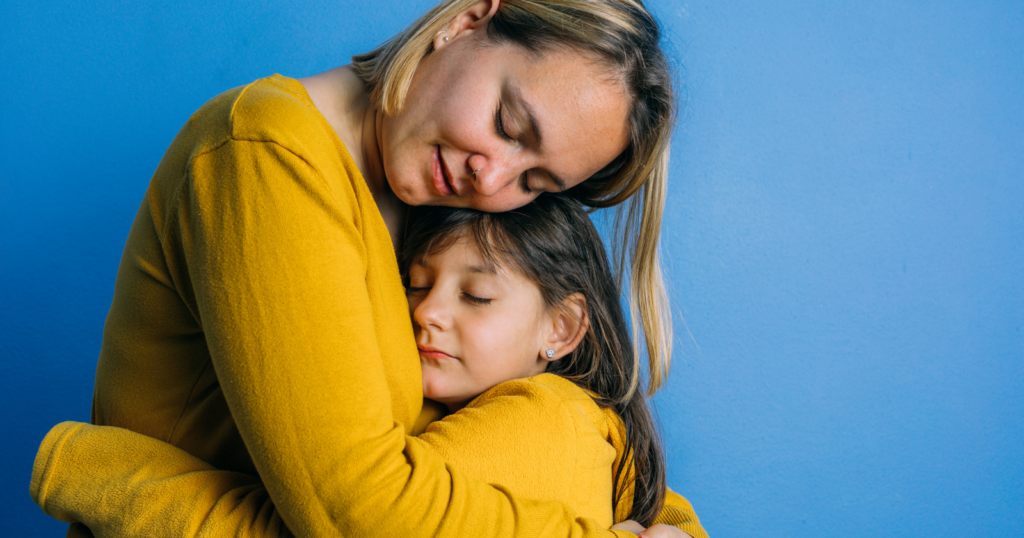There’s something magical about a simple hug.
It’s more than just two people embracing; it’s an exchange of warmth, comfort, and unconditional acceptance.
When we’re children, physical affection can be as essential to our emotional well-being as proper nutrition is to our physical health.
But not everyone grows up in a household where hugging — or any form of nurturing touch — is common.
For some, the absence of those arms around them in their formative years can echo well into adulthood.
I’ve spoken with friends who rarely received hugs as kids.
Many admit they never quite understood why displays of affection felt awkward or foreign.
Over time, some dug deeper and uncovered how their childhood lack of physical closeness contributed to specific emotional patterns in their adult relationships.
Below, we’ll explore 7 such patterns, along with relevant insights and research, to shed light on why a missing hug can have lasting effects.
1. Difficulty initiating or accepting physical affection
Imagine someone offering you a hug, and you freeze.
You might awkwardly pat their back or step away quickly.
If you grew up without frequent, nurturing touch, you may not have learned that physical affection is a safe, positive thing.
In many cultures, hugging is a normal way to say “I care about you.” But for someone who never had that baseline, it can feel invasive or forced.
A study published during the COVID-19 pandemic found that people with lower levels of affectionate contact in childhood displayed heightened anxiety when receiving touch as adults.
It’s like their system goes on high alert: “Is this safe? How do I respond?”
Get Smarter Everyday Join Us On WhatsApp
What helps?
Gentle exposure and communication.
Some find that being upfront — “I’m not used to hugs, but I’m open to trying” — creates a bridge for understanding.
When both parties acknowledge the hesitance, it’s easier to ease into a new norm of trust and closeness.
2. Chronic self-reliance
When hugs and comforting touch weren’t readily available, kids often learn to self-soothe in other ways.
It might mean retreating to a quiet space, distracting themselves with a book, or internalizing all their stress because they assume nobody else will step in.
According to Dr. Gabor Maté, early childhood experiences heavily influence how we self-regulate as adults.
Without consistent reassurance from caregivers—both verbal and physical—children become adept at coping alone.
While self-reliance can be a strength, it sometimes grows into an emotional wall.
As adults, these individuals might find it hard to lean on a partner, ask for help, or even share vulnerabilities.
Learning to accept support takes practice.
Small steps (like calling a friend when you’re stressed) can slowly dismantle the old belief that you must handle every challenge on your own.
3. A lingering sense of “skin hunger”
Have you ever felt a deep craving for touch, even if you can’t quite describe it?
This phenomenon is sometimes called “skin hunger” or “touch starvation.”
Get Smarter Everyday Join Us On WhatsApp
Children who grow up with minimal physical affection can end up with an adult life marked by an unexplainable yearning for contact.
Studies published in Comprehensive Psychoneuroendocrinology found that gentle, consistent touch can lower cortisol (the stress hormone) and improve emotional connection.
When someone misses out on that during formative years, their body might still crave it, yet their mind can resist it due to unfamiliarity.
It’s a tug-of-war between wanting closeness and feeling uneasy about how to receive it.
Practices like massage therapy, weighted blankets, or even hugging a pet can offer some sense of nurturing touch.
For many, these incremental steps help reconcile that unmet childhood need without overwhelming the senses.
4. Trouble expressing emotional needs

Picture a young child who isn’t hugged when they’re sad or scared.
They might internalize a narrative: “My emotions aren’t worth comforting,” or “I have to deal with this myself.”
That child can grow into an adult who struggles to voice their needs, especially in close relationships.
A study published in the Journal of Family Issues has noted that supportive physical affection is one way children learn that their emotions are valid and deserving of care.
Without it, they might question whether anyone truly wants to hear about their insecurities, sadness, or stress.
By adulthood, asking for emotional support — or even just saying “I’m feeling lonely” — can feel like a foreign language.
Learning to articulate these needs often requires patience and self-compassion.
Get Smarter Everyday Join Us On WhatsApp
Talking with a trusted friend or therapist can offer a safe environment to practice naming emotions and requesting help, a skill that might not have been reinforced earlier in life.
5. Heightened sensitivity to rejection
Without the reassurance of physical closeness, children sometimes develop a fragile sense of self-worth.
They may interpret a lack of hugs as a lack of love, even if that’s not what their caregivers intended.
Over the years, that message can morph into deep-rooted fears of being unwanted or unlovable.
As adults, these individuals might over-read every small sign from a partner or friend.
- A delayed text could feel like abandonment.
- A friend canceling dinner plans might spark a spiral of self-blame.
This hypersensitivity can strain relationships, with both parties feeling confused about why a small misunderstanding erupted into a larger conflict.
Reflecting on the root cause — feeling unseen or untouched in childhood — can provide context for these reactions.
Awareness is the first step toward healing.
With time, it becomes easier to recognize that a single disappointment isn’t a wholesale rejection of who we are.
6. Emotional guardedness
Someone who grew up without physical affection might become adept at hiding feelings, wearing a figurative suit of armor in everyday life.
Rather than show vulnerability, they keep interactions light or focus on others’ problems.
They might excel at being the “listener” in the group, rarely opening up themselves.
If you catch yourself feeling uncomfortable when conversations turn personal, it might be linked to this guardedness.
Breaking down those walls can be a slow process — one that involves taking intentional risks, sharing a bit more than usual, and letting trusted individuals see behind the protective facade.
Get Smarter Everyday Join Us On WhatsApp
With every small step, the distance between you and genuine connection shrinks.
7. Confusion around giving affection to others
When you weren’t taught how to comfortably receive hugs, you might also struggle with offering them.
Parents who rarely hug often don’t model affectionate behavior, leaving their children unsure how to express care physically in adulthood.
It’s not just about hugging — some may shy away from pats on the back, playful nudges, or even holding hands.
They’re unsure if it’s welcomed, they’re scared of overstepping someone else’s boundaries, or they simply don’t know how to initiate.
However, mindful touch — asking for consent, staying present in the moment, and listening to cues — can bridge that gap.
Starting with something simple, like a brief hug or a gentle hand on a friend’s shoulder, can ease you into offering warmth without it feeling awkward.
Later, these gestures can become natural ways to show support and affection, dismantling old insecurities.
Final thoughts
Physical affection in childhood does more than create pleasant family snapshots — it lays a foundation for how we understand and give love.
If you grew up in an environment where hugs were scarce, you might notice echoes of that longing or discomfort in your adult life.
These seven emotional patterns aren’t universal—everyone’s story differs—but they highlight how a simple gesture like a hug can weave itself into our psyche.
The good news is that patterns born from lack of touch aren’t set in stone.
With time, self-reflection, and deliberate steps toward healthy intimacy, it’s possible to learn how to both offer and receive affection.
You might even discover a new appreciation for the power of a warm embrace or a kind hand on your shoulder.
Sometimes, the healing begins the moment you recognize that a missing piece from your past can be reclaimed in the present.
Get Smarter Everyday Join Us On WhatsApp
Related Posts:
- People Who Are Uncomfortable With Physical Affection…
- If Your Partner Doesn’t Show Affection, Here are 9…
- 7 Habits to Say Goodbye to If You Want to Spend More…
- People Who Are Starved For Affection Often Do These…
- 9 Subtle Qualities of People Who Make the Best…
- 8 Habits People Who Grew Up with an Emotionally…
- People Who Distance Themselves From Their Parents as…
- 7 Childhood Experiences of People Who Have Almost…
- People Who See Their Aging Parents as a Burden Often…
- 9 Things Divorced Parents Don’t Realize Their Kids…







